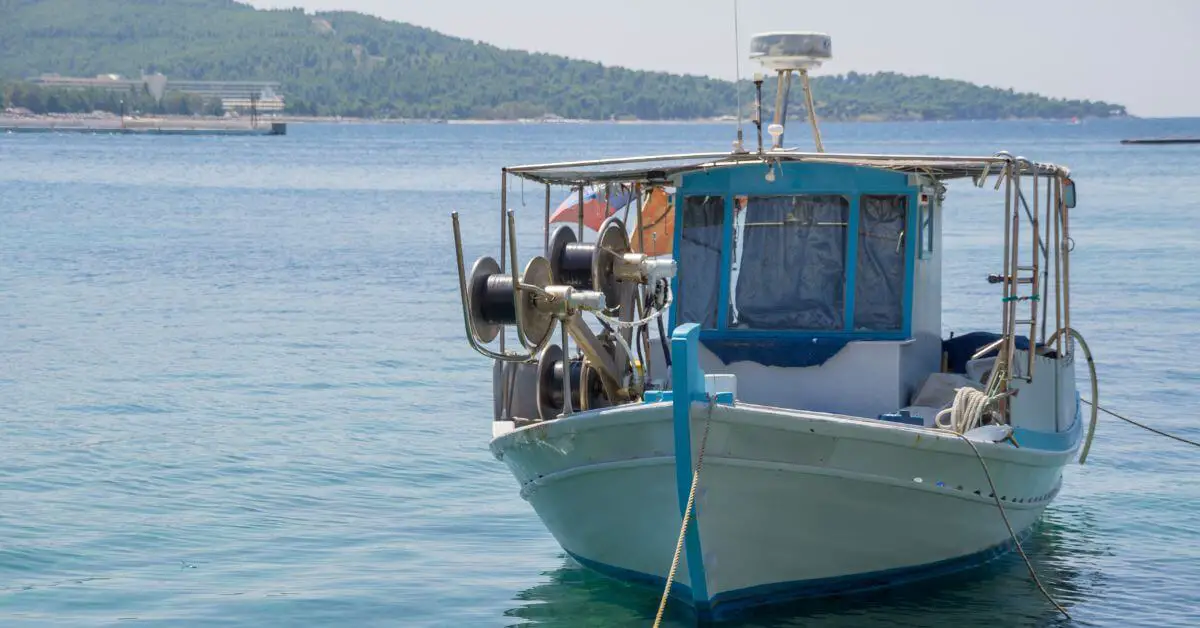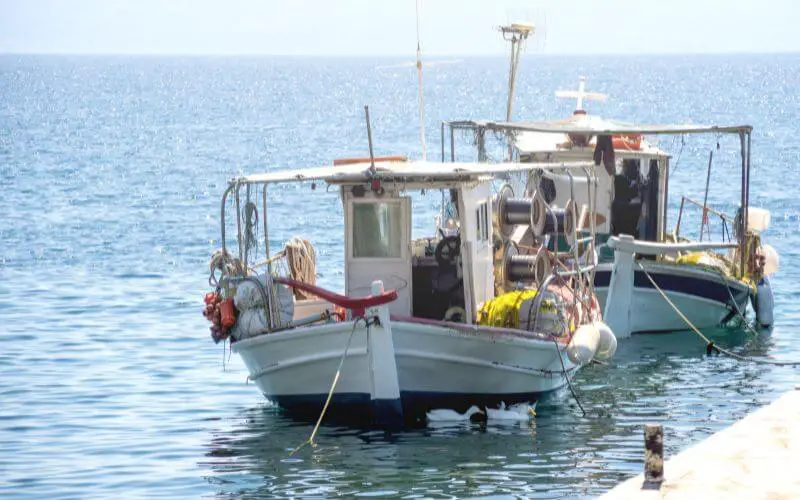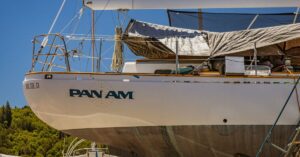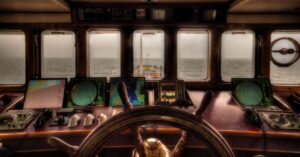Embarking on a boating adventure brings a sense of excitement and freedom. However, ensuring the safety and stability of your boat is essential for a smooth and enjoyable experience on the water. Overloading your boat with excessive weight can lead to numerous problems, ranging from compromised performance to the risk of capsizing. We present a comprehensive guide to avoiding overloading your boat to help you navigate these challenges and maintain a secure vessel.
By following these best practices, you can ensure a safe, balanced, and pleasurable boating experience for you and your passengers. So, let’s delve into the key strategies and considerations to keep your boat afloat and your journey worry-free.
What is Boat Overloading?
Boat overloading refers to exceeding the designated weight capacity of a vessel. It occurs when the combined weight of passengers, cargo, equipment, and fuel exceeds the maximum limit recommended by the manufacturer. Overloading a boat can compromise its stability, maneuverability, and overall safety.
It may lead to reduced freeboard, increased risk of capsizing, compromised performance, and difficulty controlling the boat. Boat overloading is a serious concern and can have severe consequences, making it essential to understand and adhere to the weight limitations specified by the boat’s manufacturer.
Consequences of Boat Overload
Boat overloading can have severe consequences, potentially jeopardizing the safety of those on board and the legal responsibilities of the operator. Here are some of the specific consequences of boat overloading:
Stability and Safety Risks
An overloaded boat can have reduced stability, which increases the risk of capsizing, swamping, or sinking. The added weight increases the risk of water coming over the boat’s sides, compromising the freeboard. An over-reliance on the bilge pump to keep up with the water intake can result in overworking the electrical system.
The orientation of the weight on the boat also matters. The boat’s balance can be adversely affected if passengers or equipment are unevenly distributed. The boat’s wake may also increase, making it more difficult to navigate through the water and potentially dangerous to other boaters.
Maneuverability and Control Issues
Overloading a boat can decrease maneuverability, reducing the boat’s speed, acceleration, and turning ability. The added weight can cause the boat to become less responsive, making steering and stopping more difficult, particularly in adverse conditions.
Legal Consequences
Overloading a boat can lead to legal implications such as fines, penalties, impoundment, reckless or careless operation charges, or even criminal charges. Each area and region can have its own set of regulations and guidelines specific to boat capacity and design, and it’s always important to consult the manufacturer’s guidelines or a local trusted authority on applicable regulations.
Impact on Other Boaters
Boat overloading may create a significant wake behind the vessel in the water. This can result in discomfort to passengers of other boats, causing the possibility of damage or even resulting in them losing their balance.
Preventing Boat Overload: Best Ways to Avoid Overloading Your Boat
1. Know Your Boat’s Weight Capacity
Understanding the weight capacity of your boat is the first step in avoiding overloading. Consult your boat’s manual or contact the manufacturer to determine the maximum weight it can safely carry. This includes passengers, cargo, fuel, and any additional equipment. If you are unsure how much weight your boat can handle, it is best to avoid overloading the boat.
2. Calculate the Weight Distribution
Even if you stay within your boat’s weight limit, improper weight distribution can still affect stability. Uneven distribution significantly raises the risk of capsizing. Distribute the weight evenly throughout the boat, from side to side and front to back. Position heavier items lower in the boat’s hull to maintain stability. This will help keep the boat stable.
Another way to distribute weight is to put lighter items near the edges of the boat. Even if you take steps to ensure that your boat is carrying a safe amount of weight, it is still important to use a cargo net or other securing system to keep the load in place.
3. Prioritize Safety Equipment
Safety equipment, including life jackets, fire extinguishers, and distress signals, is essential to have on board. However, these items add weight. Ensure you include the safety equipment’s weight when calculating the total weight. Safety should never be compromised, so prioritize these items and adjust other cargo accordingly.
4. Minimize Unnecessary Items
Boat spaces are limited, so only bring what is necessary. Evaluate your needs and carefully choose the items you bring on board. This applies to personal gear, food, and recreational equipment. While it may be tempting to pack everything, remember that overly cluttered boats are more prone to instability.
5. Consider Fuel Load
Fuel is a significant weight component, and excessive fuel can quickly lead to overloading. Calculate your fuel consumption based on the distance you intend to cover and the boat’s fuel efficiency. It is advisable to carry enough fuel for your trip but avoid hoarding excessive reserves that may not be necessary.
6. Utilize Storage Compartments
Boats often come equipped with storage compartments designed to help distribute weight evenly. Utilize these compartments to store gear, keeping them secure and balanced. Ensure that items are appropriately packed so they won’t shift during travel, potentially affecting weight distribution.
7. Be Mindful of Passengers
Passengers contribute to the overall weight of the boat. Inform your passengers about weight limits and encourage them to pack lightly. Consider limiting the number of passengers to avoid exceeding the boat’s capacity. Distribute passengers evenly throughout the vessel, maintaining a balanced weight distribution.
8. Regular Maintenance
Proper boat maintenance is indispensable when it comes to safety and performance. Regularly inspect your boat for any damage, leakages, or signs of wear and tear. Ensure the integrity of the hull and structural elements to avoid compromising the boat’s weight-bearing capacity.
9. Be Aware of Water Conditions
Water conditions play a vital role in the overall stability of your boat. Understanding the anticipated water conditions, including waves, currents, and choppy waters, will help you decide how much weight your boat can safely handle. Adapt your plans accordingly to minimize potential risks.
How to Determine if Your Boat is Overloaded
Determining if your boat is overloaded involves assessing various signs and indicators. It is important to note that the specific signs of overloading may vary depending on the type and design of the boat. Regularly referring to the boat’s capacity plate, maintaining a balanced weight distribution, and being mindful of the boat’s performance and stability can help prevent overloading and ensure a safe boating experience.
Here are a few ways to help you identify if your boat is carrying too much weight:
1. Boat Capacity Plate and Manual
Consult your boat’s capacity plate, typically located near the boat helm or in a visible area, which provides information on the maximum weight and number of passengers the boat can safely carry. Additionally, refer to the owner’s manual for specific guidelines and recommendations for load capacity.
2. Waterline and Plimsoll Marks
Check the waterline of your boat. It might indicate an overloaded condition if it is significantly lower in the water compared to its normal position. Waterline markings on the hull, or plimsoll marks, are designed to show the maximum permissible load for different water conditions and seasons.
3. Reduced Freeboard
Freeboard refers to the vertical distance from the boat’s waterline to the gunwale. An overloaded boat may sit lower in the water, reducing freeboard. If you notice that the freeboard is significantly decreased, it could indicate overloading.
4. Difficulty Maneuvering and Reduced Performance
Overloading can hamper your boat’s maneuverability and performance. If you experience sluggish acceleration, increased fuel consumption, or difficulty maintaining control, it may be a sign of excess weight burdening the boat’s propulsion system.
5. Instability and Swaying
An overloaded boat can become unstable, leading to increased swaying or rocking motions even in calm waters. It could indicate overloading if you notice a significant amount of lateral movement or instability.
6. Stress on Equipment
An overloaded boat stresses various equipment, such as the engine, propeller, and other structural components. If you observe unusual vibrations, increased engine strain, or visible signs of stress on the boat’s infrastructure, it may suggest that the load is exceeding the boat’s capacity.
Boat Capacity Plate and When to Use the Boat Capacity Formula
What is a Boat Capacity Plate?
A boat capacity plate is a required label or plate that displays important information about the maximum weight capacity, maximum number of people, and other relevant details for a specific boat. It serves as a reference for the operator to ensure that the boat is not overloaded and operated within safe limits.
The information presented on a boat capacity plate typically includes the maximum number of people allowed on the boat, the maximum weight capacity in pounds (including passengers, gear, and motor weight), and the maximum size of the boat engine, usually measured in horsepower. The plate may also include the boat manufacturer, model, and serial number.
The U.S. Coast Guard Federal Boat Safety Act of 1971 mandates that boats less than 20 feet long, powered with an inboard, outboard, or stern-drive engine, and manufactured after November 1, 1972, must have a capacity plate prominently displayed. This plate should be mounted in a location easily visible to the operator, typically near the steering area or helm of the boat.
The boat capacity plate is an essential tool for boaters as it provides crucial information to help maintain safe operation and prevent overloading, which can impact the boat’s stability, maneuverability, and safety. It is important to refer to this plate when loading your boat to avoid boat overload.
Please note that boat capacity plate requirements and display information may vary based on local regulations and the boat manufacturer’s guidelines. It is always advisable to consult the manufacturer’s documentation and local boating authorities for specific requirements in your area.
Don’t have a Capacity Plate? Use the Boat Capacity Formula!
The boat capacity formula is used to calculate the maximum number of people a boat can safely carry based on its length and width. The formula is as follows:
Number of people = (boat length (ft.) × boat width (ft.)) ÷ 15
This formula is commonly used on boats less than 20 feet in length with no capacity plate, and it provides a general rule of thumb for determining the number of people the boat can safely accommodate in good weather conditions.
The boat capacity formula considers the length and width of the boat in feet and divides the result by 15. The result represents an estimated number of people the boat can carry, assuming an average weight of 150 pounds per person. However, it is important to note that this formula is a rough estimate and should not be considered a definitive capacity calculation.
The boat capacity formula is a useful tool for boat operators to understand the maximum number of people their boat can carry. It provides a starting point for ensuring the boat is not overloaded and helps maintain safety on the water.
The information in a capacity plate will differ depending on the type of boat. However, it is always recommended to consult the manufacturer’s guidelines or local regulations for specific capacity requirements for your boat and consider additional factors such as equipment weight, cargo, and the boat’s design characteristics when determining the capacity.
Please note that the boat capacity formula may vary depending on local regulations and the guidelines provided by boat manufacturers. It is always important to consult credible sources, such as boating education platforms and official boating organizations, for accurate and up-to-date information based on your location and boat type.
Conclusion
As we conclude this comprehensive guide on avoiding overloading your boat, we hope the information has equipped you with the knowledge and understanding to ensure a secure and enjoyable boating experience. By adhering to weight capacity limits, distributing weight evenly, prioritizing safety equipment, minimizing unnecessary items, and being mindful of passengers, you can confidently and safely navigate the waters.
Remember, regular maintenance and awareness of water conditions are equally crucial for your boat’s longevity and everyone on board’s safety. Stay informed, keep a balanced load, and adapt your plans to the anticipated water conditions. Follow these tips, and you’ll be able to enjoy a safe and enjoyable boat trip.
With these best practices in mind, you are ready to set sail on your nautical adventures, knowing your boat is optimized for stability, maneuverability, and optimal performance. Keep the spirit of boating alive by always prioritizing safety and respecting the limits of your vessel. Bon voyage and enjoy the smoothest of sailing experiences!
Reference





